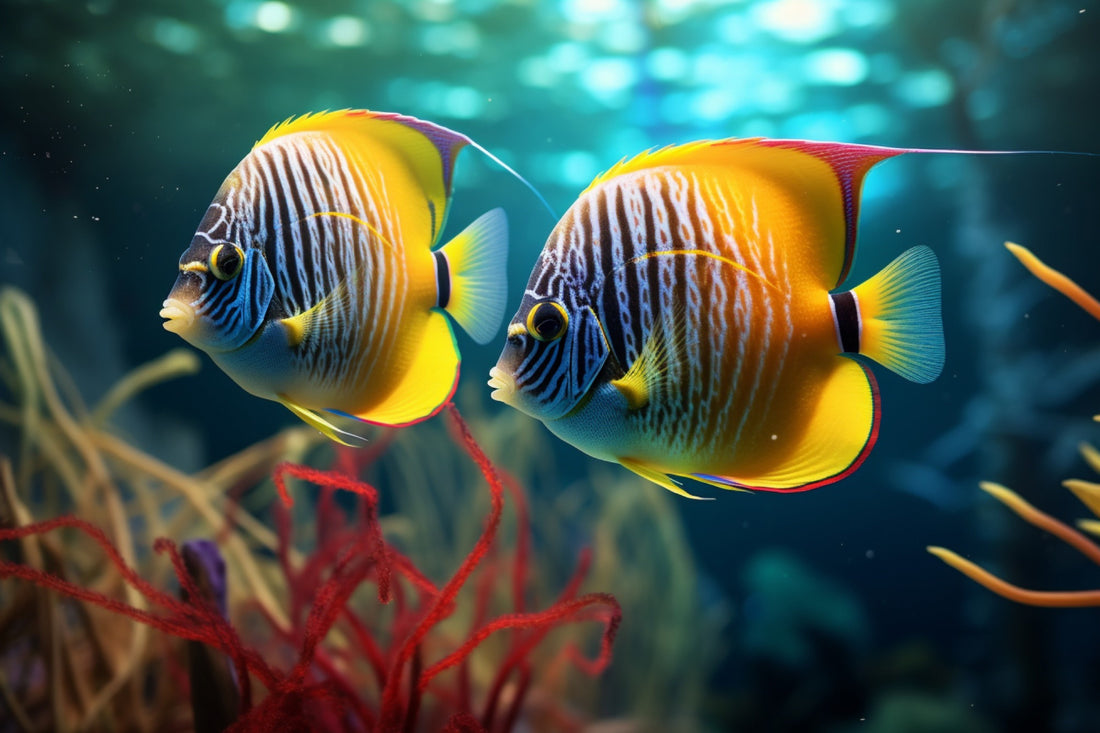
All you need to know: Angelfish
Angelfish are one of the most sought-after freshwater aquarium fishes. They have an elegant look and distinctive fin shapes. They are members of the Cichlidae family.Due to their impressive patterns and diverse colours, angelfishes are a favourite among aquarists worldwide.
Characteristics of Angelfish
Angelfish possess a laterally compressed, elongated body with dorsal and anal fins. Their graceful swimming is an added beauty, and they are a centrepiece for any aquarium. Angelfish grow to a length of six inches and need a large tank to swim about. Their colour varies from silver and black to marbled, gold, and even koi colours, making them a visually appealing option for fish keepers.
Tank Requirements
It is important to provide the proper environment for keeping angelfish healthy. Angelfish need a tank of 20 gallons or more, although larger tanks are best for more than one angelfish. A temperature of 24-28°C and a slightly acidic to neutral pH of 6.5-7.5 is best for them. Adding live plants and driftwood helps to simulate their natural environment. It gives them places to hide and minimises stress. As angelfish are territorial, providing a well-spaced tank with hiding places is important to avoid aggression.
Diet and Feeding
Angelfish are omnivores and do well on a diversified diet. Flakes or pellets of high quality must be the primary source of nutrition. Offering a diverse diet ensures angelfish gain essential nutrients to grow, enjoy bright colouring, and overall health. They must be fed twice daily in controlled amounts to avoid overfeeding and ensure water quality.
Behaviour and Tank Mates
Angelfish are semi-aggressive and territorial, particularly when breeding. Although they tend to get along with other peaceful fish, do not keep them with fin-nipping fish such as barbs or extremely aggressive fish. Suitable tank mates are tetras, gouramis, and peaceful cichlids. Introduce angelfish to a community tank when young, as they settle more easily into their environment.
Breeding Angelfish
Breading angelfish can be a gratifying task for aquarists. They produce eggs on horizontal surfaces such as wide leaves or decorations in tanks. After egg-laying, the parent angelfish closely guards the eggs to protect them from any form of danger.
Common Health Problems
Similar to other fish, angelfish also face health issues such as ich, fin rot, and fungal growths. Healthy water parameters, a proper diet, and frequent tank cleaning keep diseases at bay. Monitoring angelfish for signs of stress, sluggishness, or colour alteration can help you understand the possibility of potential health issues.
What makes angelfish special?
Angelfish are an interesting addition to any aquarium, with their beauty, elegance, and intriguing behaviour making them a favorite among aquarists. Ensuring they have the proper environment, a balanced diet, and suitable tank mates guarantees their longevity and health. As a beginner or seasoned aquarist, having angelfish can be a rewarding and enjoyable experience. With proper knowledge of their needs and provision of proper care, angelfish can live long and provide you with endless delight in your aquatic system.
At Intan, we are here to provide you with premium fish feed. Our feed is tailored to meet the specific needs of each species. Every feed can spark positive change and create a future promoting quality, resilience, and well-being. We aim to serve the needs of hobbyists and breeders for the best quality of each species’ unique requirements. To know more about us, check out our Instagram page or find us at our nearest out spot.
We are not just a brand; we are stewards of the underwater world. We believe in the well-being of our friends and their mental health. Understanding and addressing the stressors that affect fish is not just a concept for us, it's a commitment. Through our dedication to research and innovative products, we aim to ensure that fish everywhere can lead happier, healthier lives.
